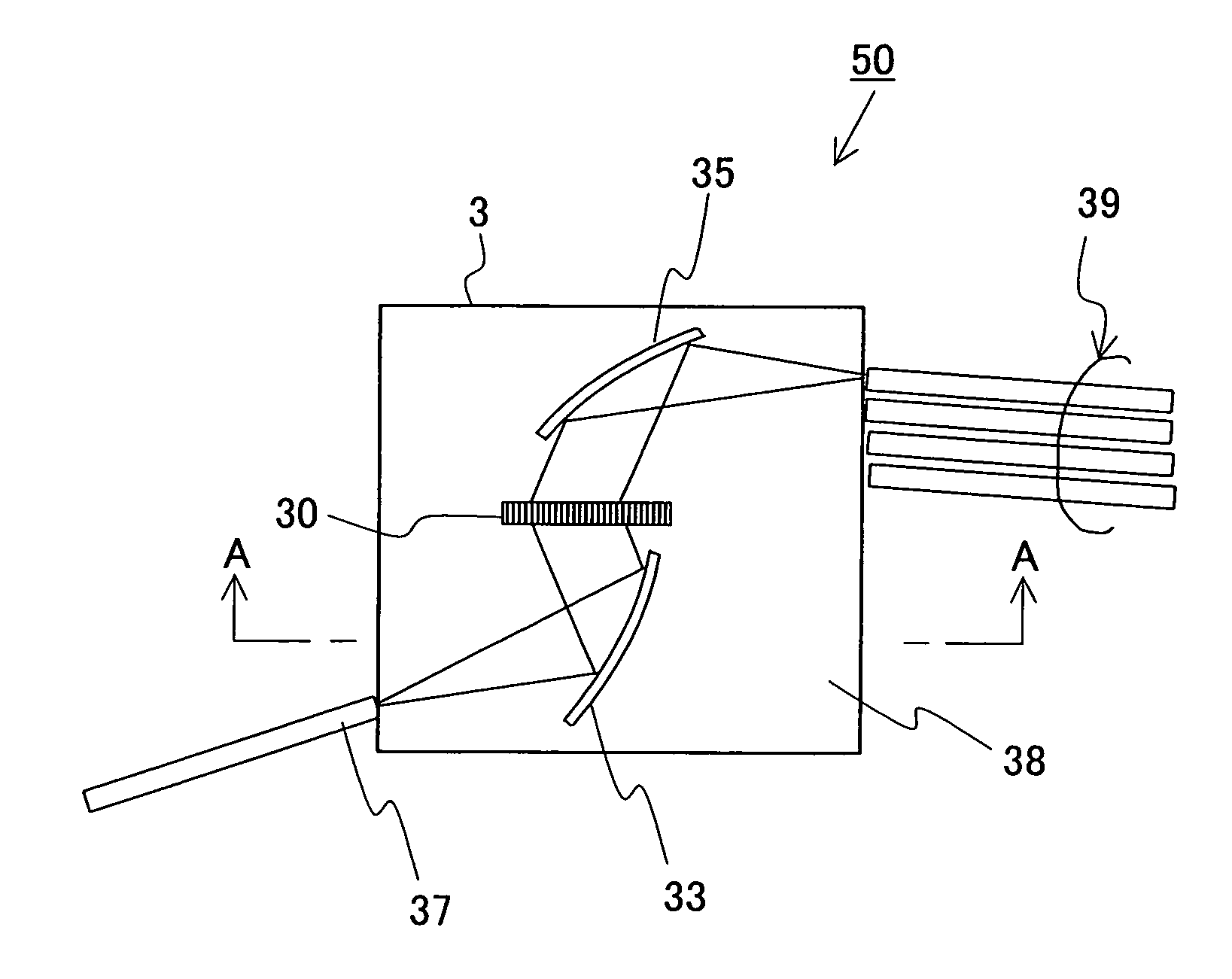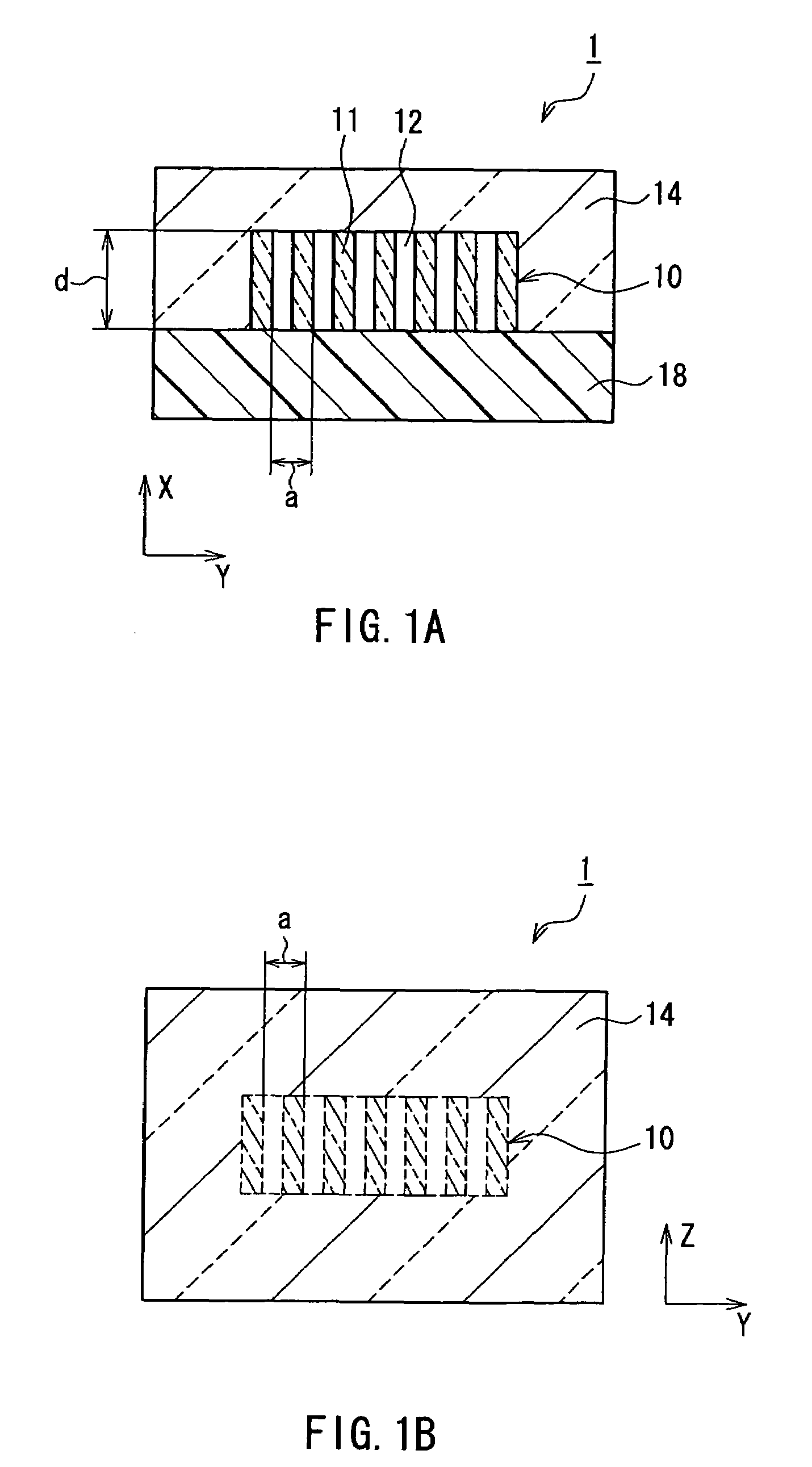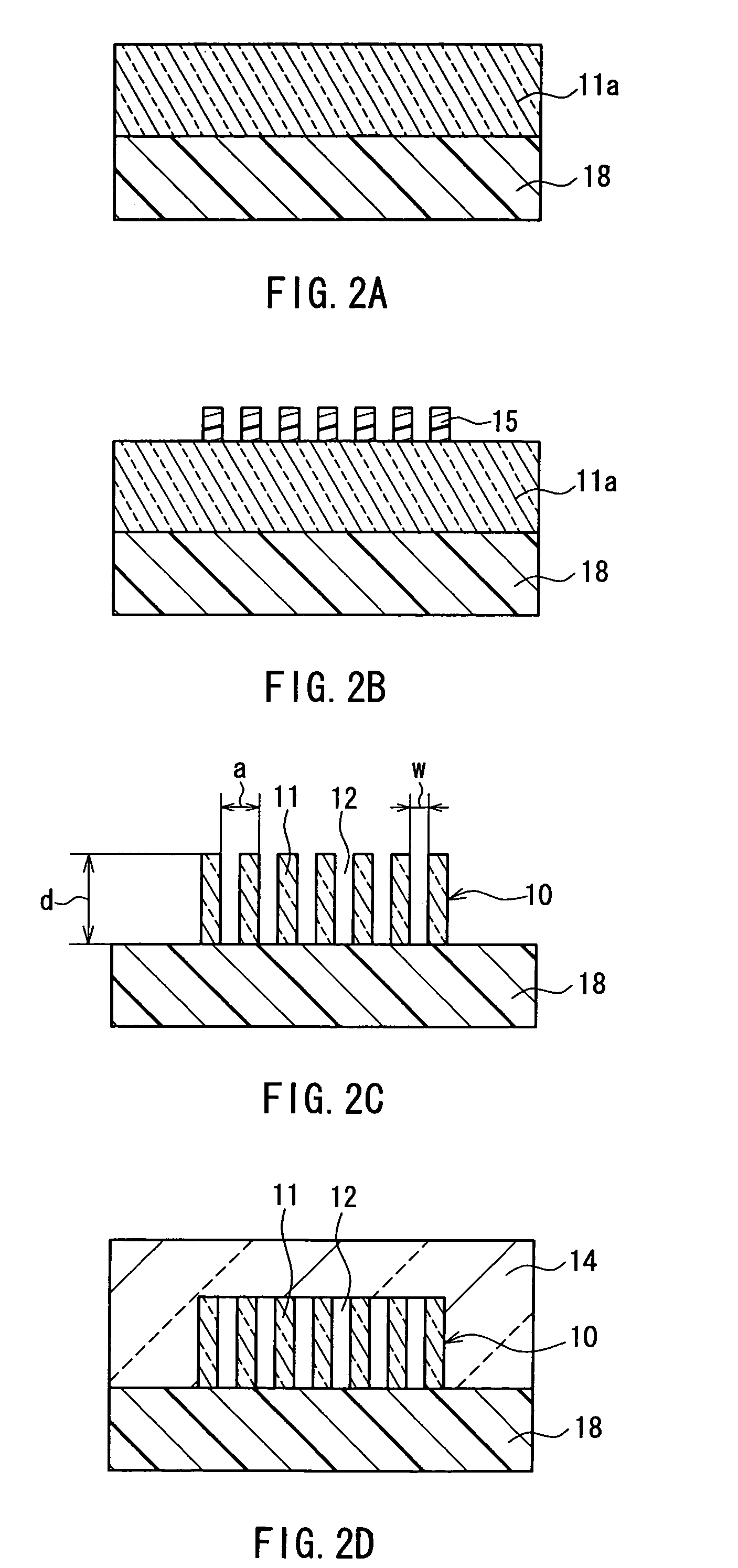Optical element, optical circuit provided with the optical element, and method for producing the optical element
a technology of optical elements and optical circuits, applied in the direction of optical elements, instruments, optical waveguide light guides, etc., can solve the problems of poor configuration freedom, complicated and sophisticated processing techniques, and unsuitable cwdm awg, so as to reduce coupling loss with optical fibers, reduce polarization dependency, and achieve easy production. high performance
- Summary
- Abstract
- Description
- Claims
- Application Information
AI Technical Summary
Benefits of technology
Problems solved by technology
Method used
Image
Examples
embodiment 1
[0094]FIG. 1A is a cross-sectional view showing a configuration of an optical element 1 according to Embodiment 1 of the present invention. FIG. 1B is a plan view of the optical element 1 according to Embodiment 1 of the present invention. A structure 10 includes a substrate 18, ridges 11 that are convex portions formed on the substrate 18, and grooves 12 that are concave portions formed between the ridges 11. The structure 10 is a periodic structure in which the ridges 11 and the grooves 12 are arranged periodically, and a covering layer 14 is formed so as to cover the structure 10. Although the structure 10 is covered with the covering layer 14, the covering layer 14 is not incorporated in the grooves 12, and the grooves 12 are hollow. In FIG. 1B, the structure 10 is not seen due to the covering layer 14; however, the grooves 12 are represented by a broken line for ease of understanding.
[0095]Herein, the periodic structure refers to a periodic arrangement of two kinds of materials...
example 1
[0113]An optical element 1 with a one-dimensional periodic structure embedded therein was produced by the following procedure, as shown in FIGS. 2A to 2D. Aline-shaped metal mask 15 was formed at an equal interval on a solid material 11a formed on a substrate 18. Thereafter, ridges 11 and grooves 12 were formed of the solid material 11a by dry etching. At this time, the ridges 11 and the grooves 12 were formed alternately so as to have a one-dimensional periodic structure. A period a in the structure 10 thus produced was 3 μm, a groove depth d was 4 μm, and an aspect ratio AR was 3. Silica to be the covering layer 14 was formed on the surface of the structure 10 by plasma CVD. FIG. 3 shows a scanning electron micrograph of a cross-section of the optical element 1 after forming the covering layer 14. As is apparent from FIG. 3, the structure 10 is positioned under the covering layer 14 made of silica. Furthermore, it is confirmed that the covering layer 14 is not incorporated in the ...
example 2
[0119]An optical element 1 of Example 2 according to Embodiment 1 will be described. The optical element 1 of Example 2 is, for example, a high-functional diffraction grating. In the optical element 1 of Example 2, as shown in FIG. 2B, a mask pattern was formed on a solid material 11a, using a metal mask 15 by electron beam drawing and lift-off of Ni. Thereafter, ridges 11 and grooves 12 were formed of the solid material 11a by dry etching of Inductively Coupled Plasma-RIE (ICP-RIE).
[0120]For film formation, RF sputtering was performed, using silica as a target for a covering layer 14. FIG. 4 shows a scanning electron micrograph of a cross-section of the optical element 1 produced in Example 2. A structure 10 is a diffraction grating that is a periodic structure. It is understood from FIG. 4 that the groove width hardly is reduced by film formation, and the covering layer 14 can be suppressed from being incorporated into the grooves 12. The diffraction grating that is the structure ...
PUM
 Login to View More
Login to View More Abstract
Description
Claims
Application Information
 Login to View More
Login to View More - R&D
- Intellectual Property
- Life Sciences
- Materials
- Tech Scout
- Unparalleled Data Quality
- Higher Quality Content
- 60% Fewer Hallucinations
Browse by: Latest US Patents, China's latest patents, Technical Efficacy Thesaurus, Application Domain, Technology Topic, Popular Technical Reports.
© 2025 PatSnap. All rights reserved.Legal|Privacy policy|Modern Slavery Act Transparency Statement|Sitemap|About US| Contact US: help@patsnap.com



